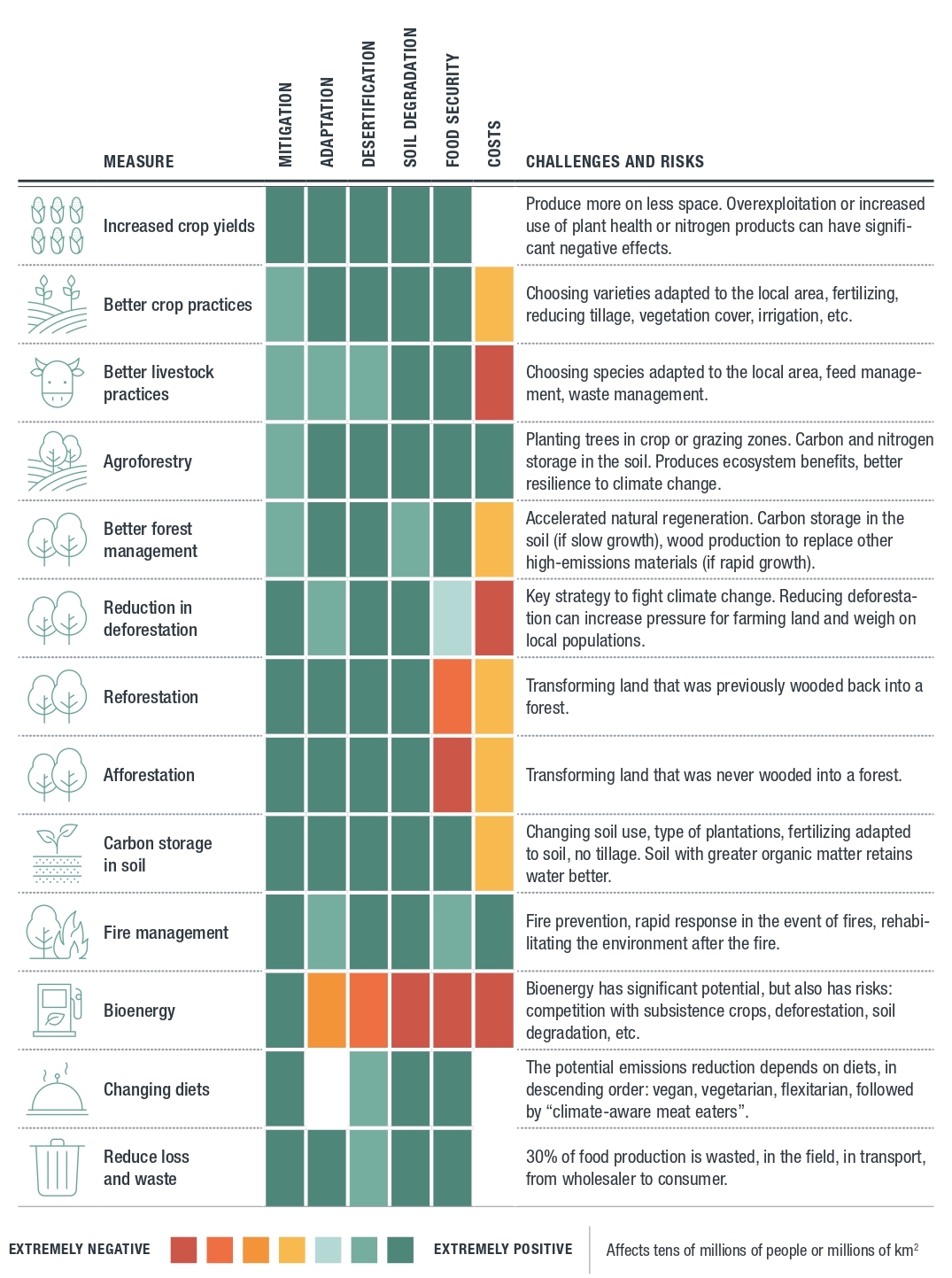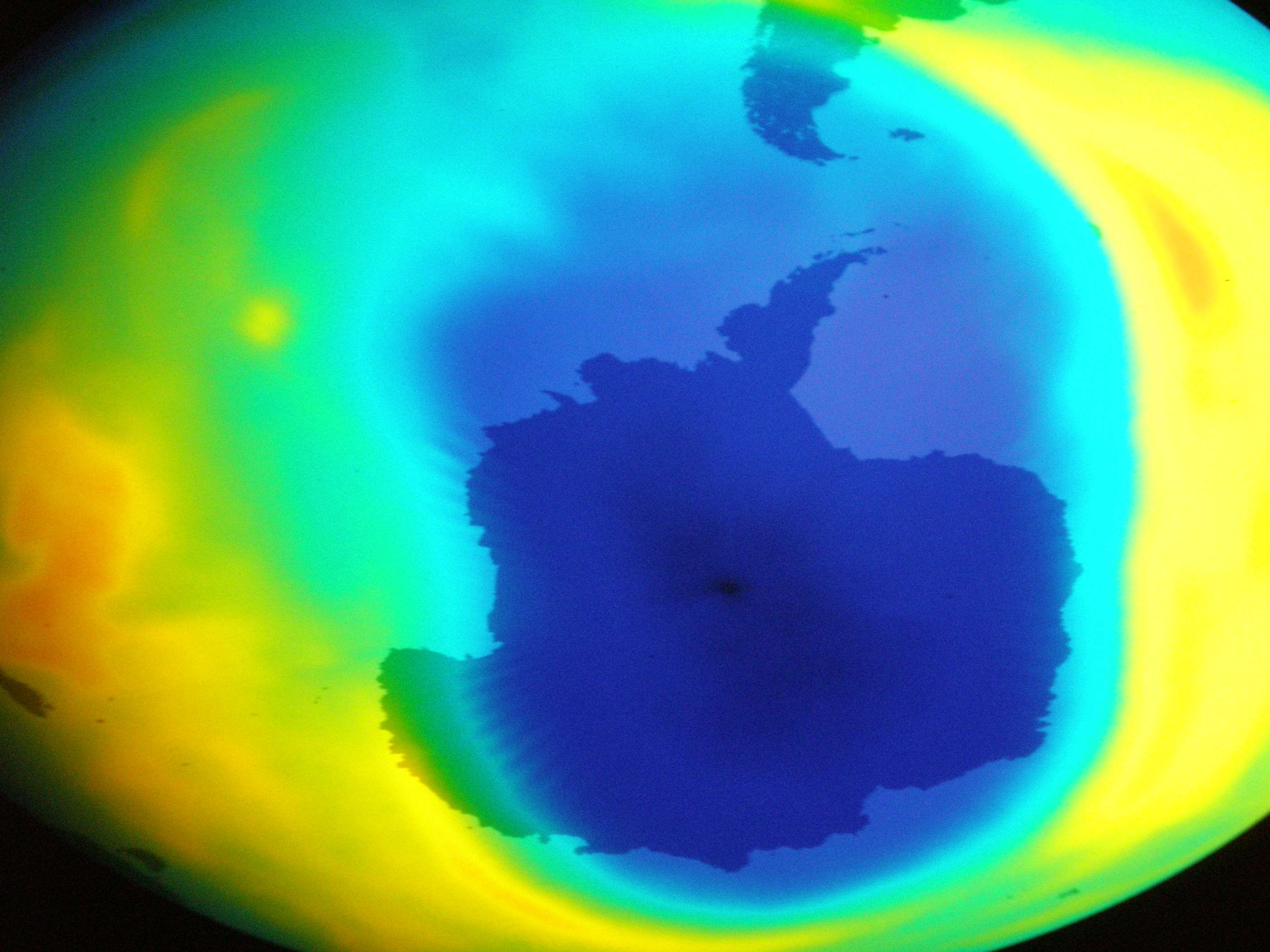Land is currently experiencing growing pressure due to human activities at a global level, in addition to the pressure brought by climate change. Land represents the primary basis for human livelihoods and well-being, supplying food, freshwater and multiple other elements, as well as being the cradle of biodiversity.
In August 2019, the Intergovernmental Panel on Climate Change (IPCC), the world body for assessing the state of scientific knowledge related to climate change, its impacts and potential future risks, and possible response options, approved and published the Summary for Policymakers of the Special Report on Climate Change and Land (SRCCL).
The Report shows that an improved land management can contribute to tackling climate change, but is not the only solution. In 2015, world governments endorsed the Paris Agreement with the goal of strengthening the global response to climate change, aiming to restrict the increase in the global average temperature.
Reducing greenhouse gas emissions from all sectors is essential if global warming is to be kept to well below 2°C above pre-industrial levels, and striving to limit the increase to 1.5°C.
As the world population increases and the negative impacts of climate change become more evident, land needs to remain healthy and productive to maintain ecological balance, biodiversity and food security.
Land is a critical resource
The IPCC Special Report on climate change, desertification, land degradation, sustainable land management, food security, and greenhouse gas fluxes in terrestrial ecosystems points out that the world is best placed to tackle climate change when there is an overall focus on sustainability.
“Land plays an important role in the climate system. Agriculture, forestry and other types of land use account for 23% of human greenhouse gas emissions. At the same time, natural land processes absorb carbon dioxide equivalent to almost a third of carbon dioxide emissions from fossil fuels and industry.”
Jim Skea, Co-Chair of IPCC Working Group III
According to the SRCCL Report, land acts as both a source and a sink of greenhouse gasses (GHGs), and plays a key role in the exchange of energy, water and aerosols between the land surface and atmosphere.
Around 23% of anthropogenic greenhouse gas emissions come from agriculture, forestry and other land uses. Emissions are mainly due to deforestation, partly offset by afforestation and reforestation. Agriculture is responsible for about half of anthropogenic methane emissions and is the main source of nitrous oxide, both strong greenhouse gasses.
At the same time, the terrestrial biosphere absorbs almost 30% of anthropogenic CO2 emissions thanks to natural processes. However, this function is vulnerable to the impacts of climate change, such as increased drought and wildfires, and other environmental and human pressures. Finally, changes in land use modify the biophysical properties of the earth’s surface, like energy and water balance, which lead to further variations in temperature and precipitation on a local scale.
The IPCC Report on Land shows that climate change exacerbates existing pressures on land resources, ecosystem services and biodiversity from exploitation of land and freshwater resources, which is unprecedented in recent decades.
Air temperatures over land have increased faster than the global average and are up to about 1.5°C warmer compared to the pre-industrial era. This is nearly double the rate of increase in global average temperature, which also takes oceans into account.
The impacts of climate change on terrestrial natural ecosystems, permafrost degradation, desertification, land degradation and food insecurity have been extensively observed and are supported by evidence.
Climate change increases the rate and extent of ongoing land degradation through two main factors: an increased frequency, intensity and/or amount of heavy precipitation and increased heat stress. Future global warming will further aggravate the degradation processes through floods and more frequent droughts, increased intensity of cyclones and sea level rise with different effects depending on land management. Moreover, the distribution of pests and diseases will change, adversely affecting agricultural production in many regions.
The future impacts of climate change can vary significantly from region to region. Crop yields are expected to decline as temperatures rise, especially in tropical and semi-tropical regions. Aridity is expected to increase in some areas of central and eastern southern Asia and western Africa, where about half of the most vulnerable populations reside, with serious risks for food security and a consequent increase in migration phenomena, likely due to the increase in food prices and the reduction of land available for agricultural production.
In the Mediterranean region, the observed and predicted decrease in annual rainfall due to climate change is accompanied by an increase in rainfall intensity resulting in soil erosion. This caused a reduction in agricultural productivity, and this trend is expected to increase in the future.
Desertification, land degradation and food insecurity
When land is degraded, it becomes less productive, restricting what can be grown and reducing the soil’s ability to absorb carbon. This exacerbates climate change, while climate change in turn exacerbates land degradation in many different ways.
“The choices we make about sustainable land management can help reduce and in some cases reverse these adverse impacts. In a future with more intensive rainfall the risk of soil erosion on croplands increases, and sustainable land management is a way to protect communities from the detrimental impacts of this soil erosion and landslides. However, there are limits to what can be done, so in other cases degradation might be irreversible.”
Kiyoto Tanabe, Co-Chair of the Task Force on National Greenhouse Gas Inventories.
Roughly 500 million people live in areas that experience desertification. Drylands and areas that experience desertification are also more vulnerable to climate change and extreme events including drought, heatwaves, and dust storms, with an increasing global population providing further pressure.
The SRCCL Report aims to set out options to tackle land degradation, and prevent or adapt to further climate change. It also examines potential impacts from different levels of global warming.

Coordinated action to address climate change can simultaneously improve land, food security and nutrition, and help to end hunger. The Report highlights that climate change is affecting all four pillars of food security: availability (yield and production), access (prices and ability to obtain food), utilization (nutrition and cooking), and stability (disruptions to availability).
The report points out that about one third of food produced worldwide is lost or wasted. Causes of food loss and waste differ substantially between developed and developing countries, as well as between regions. Reducing this loss and waste would reduce greenhouse gas emissions and improve food security.
“Some dietary choices require more land and water, and cause more emissions of heat-trapping gasses than others. Balanced diets featuring plant-based foods, such as coarse grains, legumes, fruits and vegetables, and animal-sourced food produced sustainably in low greenhouse gas emission systems, present major opportunities for adaptation to and limiting climate change.”
Debra Roberts, Co-Chair of IPCC Working Group II
According to the IPCC Report, there are ways to manage risks and reduce vulnerabilities in land and the food system. Risk management can enhance communities’ resilience to extreme events, which has an impact on food systems. This can be the result of dietary changes or ensuring a variety of crops to prevent further land degradation and increase resilience to extreme or varying weather.
Reducing inequalities, improving incomes, and ensuring equitable access to food so that some regions where land cannot provide adequate food are not disadvantaged, are other ways to adapt to the negative effects of climate change. There are also methods to manage and share risks, some of which are already available, such as early warning systems.
An overall focus on sustainability coupled with early action offers the best chances to tackle climate change. This would entail low population growth and reduced inequalities, improved nutrition and lower food waste.
This could enable a more resilient food system and make more land available for bioenergy, while still protecting forests and natural ecosystems. However, without early action in these areas, more land would be required for bioenergy, leading to challenging decisions about future land-use and food security.
Land and climate change responses
Policies that are outside the land and energy domains, such as on transport and environment, can also make a critical difference to tackling climate change. Acting early is more cost-effective as it avoids losses.
“There are things we are already doing. We are using technologies and good practices, but they do need to be scaled up and used in other suitable places that they are not being used in now. There is real potential here through more sustainable land use, reducing over-consumption and waste of food, eliminating the clearing and burning of forests, preventing over-harvesting of fuelwood, and reducing greenhouse gas emissions, thus helping to address land related climate change issues.”
Panmao Zhai, Co-Chair of IPCC Working Group I
Mitigation and adaptation are two sides of the same coin in territorial and environmental management policies, and one cannot ignore the other. Especially when it comes to mitigation, it is essential to ensure the resilience of agricultural and forest ecosystems, to ensure the permanence of stored carbon and preserve the CO2 absorption capacity of these systems. For example, reforestation activities should be combined with forest fire protection measures in high risk areas.
There are many effective low and medium cost land management strategies, which involve food chain management and risk management, and at the same time combat climate change, soil degradation and promote food security.
Most of these strategies can be implemented without the risk of increasing competition for land use, and potentially offering multiple benefits.
Land management implies several challenges that involve many fundamental areas of human life and the environment. Mitigation and adaptation actions must consider local conditions, the variety of conflicting interests and environmental physical limits.
Integrated and coherent packages of measures and policies for climate and land management supported, for example, by participatory approaches and performance evaluation tools have significant potential for an efficient use of resources, amplifying social resilience, ecological restoration and the commitment on the territory of the interested parties.
The protection of forests and the reduction of forest degradation is a mitigation option with a high potential in terms of environmental and social benefits. The increase in organic matter of soils increases the storage capacity of atmospheric CO2 (mitigation), improving the water retention capacity of soils (adaptation).
Many climate models rely on mitigation actions involving reforestation and the spread of large-scale bioenergy crops, associated with carbon capture and storage systems. The implementation of these measures on a large scale can increase the risk of competition for land use with other uses, such as agricultural production. Increasing the extent and intensity of biomass production through, for example, increasing the use of fertilizers, irrigation or the use of monocultures, can lead to negative impacts such as environmental degradation.
On the other hand, when implemented in compliance with the criteria of environmental and social sustainability, the production of bioenergy on a local scale, as well as the reforestation activities of degraded areas, can bring considerable benefits for the environmental recovery and restoration of marginal areas.
“The report shows how managing land resources sustainably can help address climate change. Land already in use could feed the world in a changing climate and provide biomass for renewable energy, but early, far-reaching action across several areas is required. Also for the conservation and restoration of ecosystems and biodiversity.”
Hans-Otto Pörtner, Co-Chair of IPCC Working Group II
The Full IPCC Special Report on Climate Change and Land is available here.






